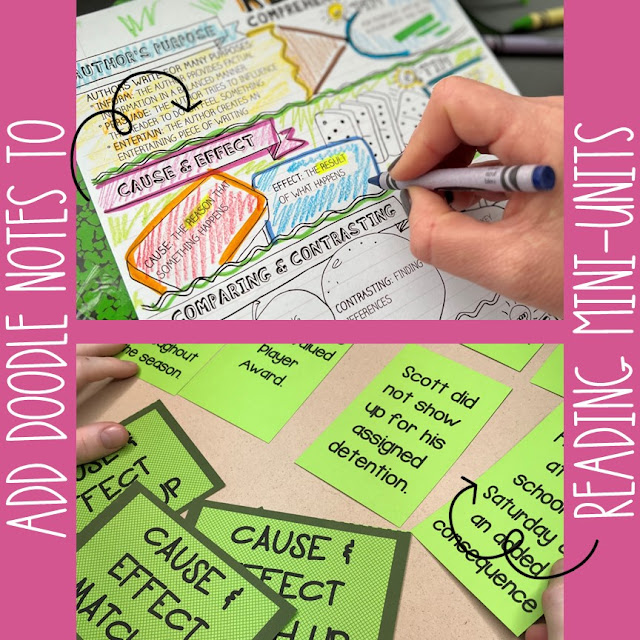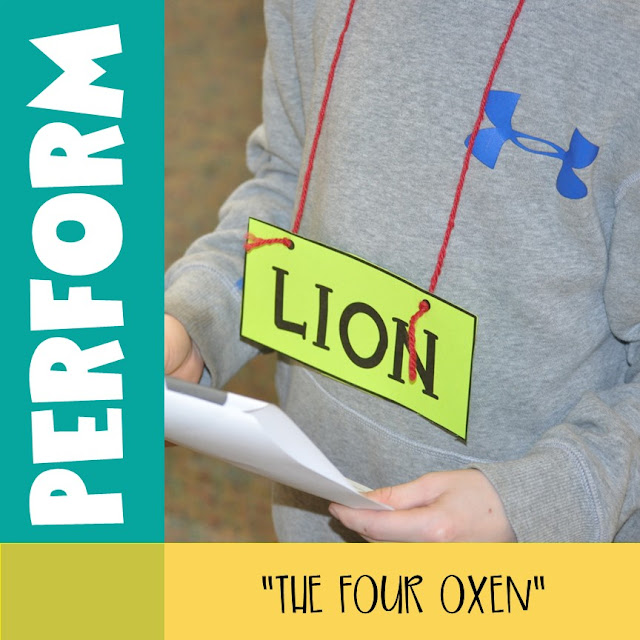Fables are an important part of English Language Arts instruction. The genre, which often includes animals that act like humans and moral lessons, is perfect for targeted lessons in reading, writing, listening, speaking, and analyzing. Classic and modern fables are both entertaining and approachable. Fables also shed light on other cultures, characterization, and moral lessons. Most importantly, they're just plain fun to teach! Here are 6 easy ways to teach fables in your classroom...
I LOVE giving students a chance to write their very own fable. I recommend starting with mentor texts so that students can become experts on the genre. Then, through targeted writing instruction, students can write their own story that includes a moral, animal characters, story elements, and illustrations. As students develop their stories, you can even have them "pitch" their stories to their peers acting as storybook editors.
Once students have written a strong fable, take these lessons to the next level and let students create a children's book filled with illustrations. You could even have them share their fables with younger students. Check out this ready-to-teach Fable Writing Unit!
Don't you just love lessons that meet a ton of instructional standards at once? Well, this fable unit does just that! It’s a 7-day unit designed around Aesop’s fable “The Ant and the Grasshopper,” and in it students read three different versions of the fable. After building background on each form, they have the opportunity to critically read and respond to the fable in prose, verse, and drama form. Through small group work, independent studies, and class discussions students will not only understand and appreciate the elements of a fable and each form of literature, but they’ll also develop a deep understanding of each text. Learn more about this unit here.
Of course, fables are wonderful to read in the classroom. But, why just read a fable when you can also connect, investigate, write, and draw? I created this Foldable Fables resource with Art with Jenny K. to combine reading, writing, and illustrating. This resource is super engaging because students create an accordion-style booklet filled with their learning and creativity. It's fun and educational!
I've found that fables are wonderful to add to learning stations focused on reading comprehension skills. For instance, in this sequencing centers resource, students investigate "Fox and the Goat" at one of the learning stations. At the station, they're tasked to read the fable and then put the fable in the correct sequence with an interactive shape.
Since fables are often short and focused they're the perfect addition to reading comprehension learning stations!
Fables lend themselves perfectly to plays. I've found that students respond really well to opportunities to perform short skits and plays in the classroom. In this theme mini-unit, students get to act out "The Four Oxen and a Lion." As a small group, they practice reading out loud, acting, and investigating theme. It's fun for students to get into different characters as they act out a fable!
I'm a big fan of reading out loud to students. Often, I would read stories to students as they completed their daily warm-ups. My read alouds included novels, poems, short stories, and of course, fables. You might mix-up your own read alouds with fables from around the world or modern fables. Here are a few collections of fables that you might want to add to your classroom library...
--- Aesop's Fables: The Classic Edition
--- Buddhist Stories for Kids
--- Filipino Children's Favorite Stories
-------------------------------------------------------------------
I hope you've found some simple ways to teach fables in your classroom! Fables really are wonderful literature treasures for teaching reading, writing, investigating, performing, and more!
Thanks for stopping by!
Mary Beth
P.S. My friend, Art with Jenny K., has another idea for adding fables to the classroom. Check out her post here.
*This post contains affiliate links.
















